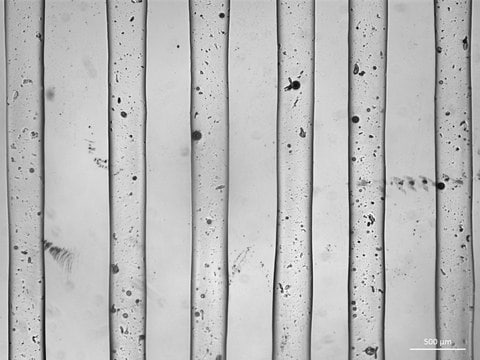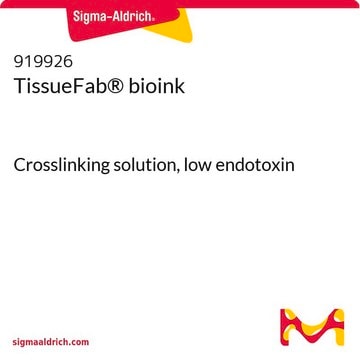推荐产品
描述
suitable for 3D bioprinting applications
形狀
gel form (Viscous)
雜質
≤5 CFU/g Bioburden (Fungal)
≤5 CFU/g Bioburden (Total Aerobic)
顏色
colorless to pale yellow
pH值
6.5-7.5
應用
3D bioprinting
儲存溫度
2-8°C
正在寻找类似产品? 访问 产品对比指南
相关类别
一般說明
應用
包裝
法律資訊
訊號詞
Warning
危險聲明
危險分類
Skin Sens. 1 - STOT RE 2
標靶器官
Liver,Upper respiratory tract
儲存類別代碼
10 - Combustible liquids
水污染物質分類(WGK)
WGK 3
閃點(°F)
Not applicable
閃點(°C)
Not applicable
其他客户在看
商品
生物墨水可3D生物打印形成功能组织结构,从而应用于药物筛选、疾病建模和体外移植。针对特定组织工程应用选择生物墨水和打印方法。
Bioinks enable 3D bioprinting of tissue constructs for drug screening and transplantation; select suitable bioinks for specific tissue engineering.
Learn how 3D bioprinting is revolutionizing drug discovery with highly-controllable cell co-culture, printable biomaterials, and its potential to simulate tissues and organs. This review paper also compares 3D bioprinting to other advanced biomimetic techniques such as organoids and organ chips.
实验方案
Frequently asked questions (FAQs) for KAPA SYBR® FAST One-Step qRT-PCR Kits.
我们的科学家团队拥有各种研究领域经验,包括生命科学、材料科学、化学合成、色谱、分析及许多其他领域.
联系技术服务部门












